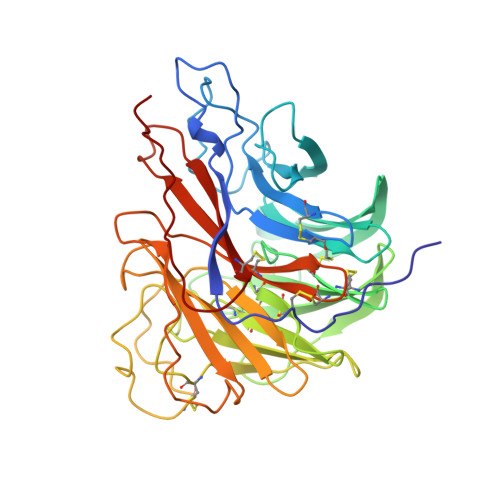Novel aromatic inhibitors of influenza virus neuraminidase make selective interactions with conserved residues and water molecules in the active site.
Finley, J.B., Atigadda, V.R., Duarte, F., Zhao, J.J., Brouillette, W.J., Air, G.M., Luo, M.(1999) J Mol Biol 293: 1107-1119
- PubMed: 10547289
- DOI: https://doi.org/10.1006/jmbi.1999.3180
- Primary Citation of Related Structures:
1B9S, 1B9T, 1B9V - PubMed Abstract:
The active site of type A or B influenza virus neuraminidase is composed of 11 conserved residues that directly interact with the substrate, sialic acid. An aromatic benzene ring has been used to replace the pyranose of sialic acid in our design of novel neuraminidase inhibitors. A bis(hydroxymethyl)pyrrolidinone ring was constructed in place of the N-acetyl group on the sialic acid. The hydroxymethyl groups replace two active site water molecules, which resulted in the high affinity of the nanomolar inhibitors. However, these inhibitors have greater potency for type A influenza virus than for type B influenza virus. To resolve the differences, we determined the X-ray crystal structure of three benzoic acid substituted inhibitors bound to the active site of B/Lee/40 neuraminidase. The investigation of a hydrophobic aliphatic group and a hydrophilic guanidino group on the aromatic inhibitors shows changes in the interaction with the active site residue Glu275. The results provide an explanation for the difference in efficacy of these inhibitors against types A and B viruses, even though the 11 active site residues of the neuraminidase are conserved.
Organizational Affiliation:
Center for Macromolecular Crystallography, Department of Microbiology, University of Alabama, Birmingham, AL 35294, USA.

















